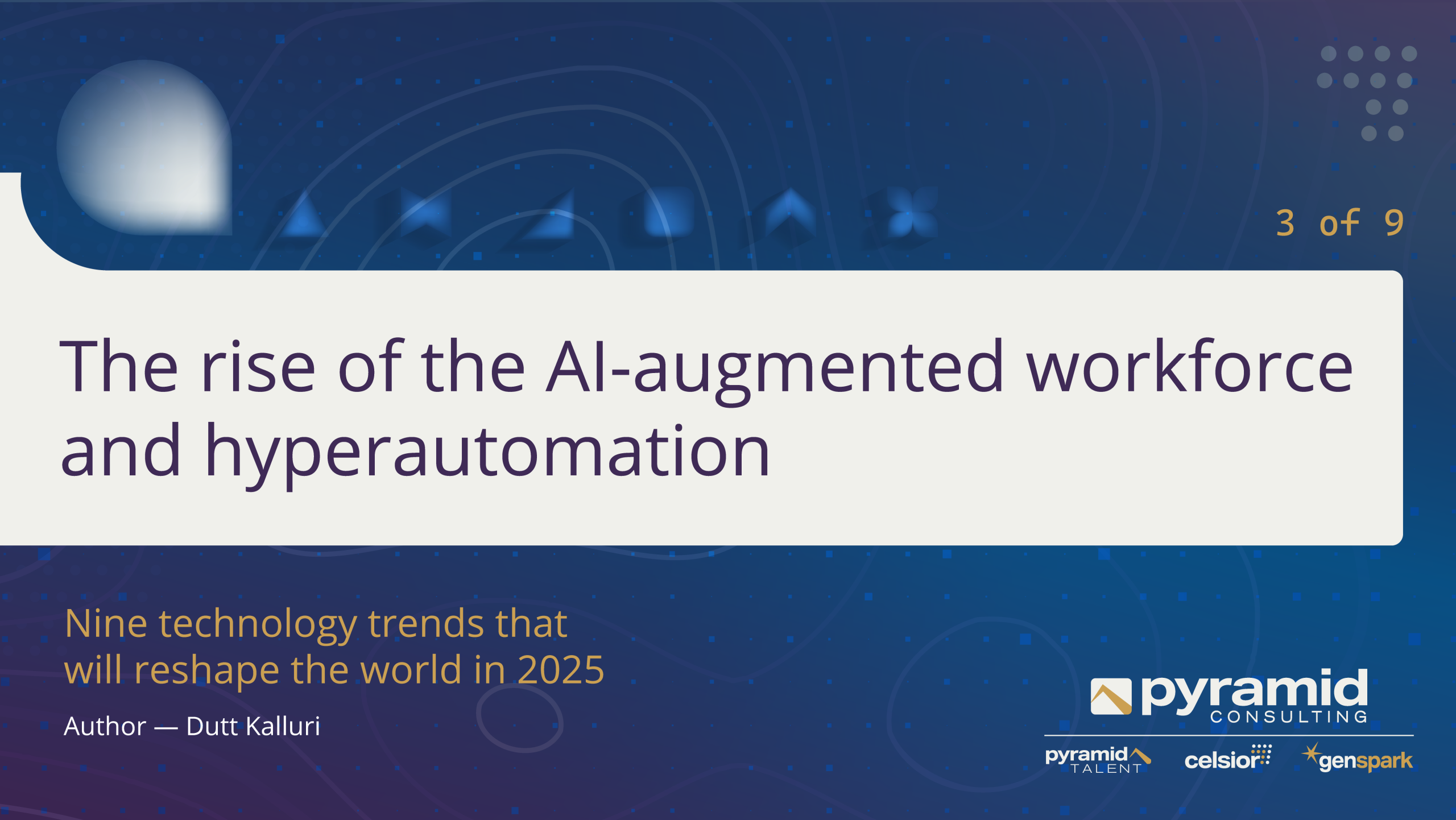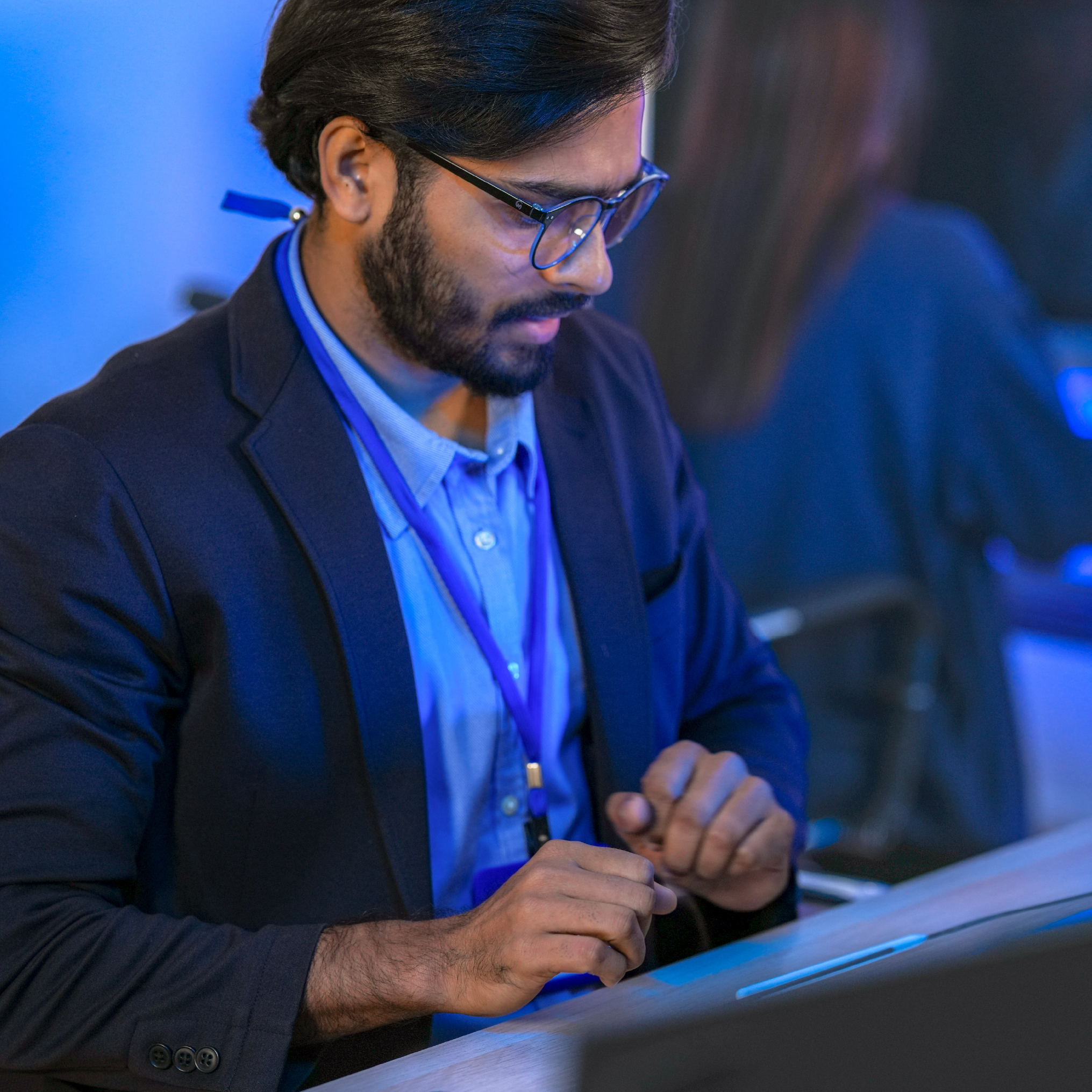
AI has moved beyond being a futuristic tool or a “nice-to-have” technology. It is now becoming an active teammate and participant in workflows across industries. At the heart of this shift lies the seamless integration of human ingenuity and machine intelligence. Together, human beings, digital entities, and machines can achieve what none could accomplish alone.
The workforce landscape is changing as roles evolve and work demands increase. Nearly 20% of workers hired today in the U.S. have job titles that did not exist in 2000, and by 2030, 70% of workplace skills will change, with AI emerging as a catalyst. Now is the time to adapt.
As we enter 2025, the workplace is transforming as human ingenuity and AI collaborate seamlessly. No longer just a futuristic concept, AI has become mainstream, a trusted partner, enhancing creativity, productivity, and growth. Rather than replacing human capabilities, it expands them, integrating into workflows to drive innovation.
In the financial services industry, AI-powered systems are automating everything from data reconciliation to fraud detection, freeing professionals to focus on high-end decision-making. For example, AI has revolutionized loan application processing by analyzing data, connecting with credit bureaus, and generating precise risk profiles in minutes.
Even in healthcare, AI enhances patient care by analyzing medical records and recommending personalized treatment plans – and even saving lives. Advanced systems now assist in surgeries with minimal human intervention. As part of a team that developed a surgical robotic arm for abscess removal, I saw firsthand that this transformation isn’t just about technology—it’s about redefining collaboration, improving efficiency, enhancing decision-making, and prioritizing strategy.
AI is set to manage more than 40% of repetitive tasks in corporations worldwide, delivering real-time insights and allowing employees to focus on creativity and strategic thinking. However, the key to success lies in prioritizing strategy upfront, not as an afterthought.
Organizations must define a strategic vision first—guiding AI adoption in ways that empower workers rather than replace them, which should then guide the tactical approach of an organization. This will be crucial to unleashing the human potential of the people whose jobs are impacted. The acceleration of technology, transformation, and adoption is at its peak right now, and we, as corporates or a society, must invest in mentoring, nurturing, and creating spaces for this unleashed potential to thrive.
This will help humans become teammates with AI, not competitors.
The rising demand for efficiency, technological advancements, and changing workforce dynamics will fuel the next evolution of automation — hyperautomation.
Unlike traditional automation, which focuses on isolated, rules-based tasks, hyperautomation solutions combines RPA, AI, and intelligent workflows to build interconnected systems that continuously adapt and improve.
Let us look at the key drivers.
Demand for efficiency
Changing economic pressures and competitive landscapes are driving organizations to operate more efficiently. For example, fintech organizations must compete with cloud-first, hyper-automated enterprises that offer lower-cost services with near-zero carbon footprints. To stay competitive, organizations are embracing hyperautomation to streamline operations, reduce costs, and improve customer experiences.
Advancements in AI & automation technology
Breakthroughs in generative AI, natural language processing (NLP), and intelligent bots have transformed automation. Thanks to hyperautomation, AI-powered systems can now make accurate, real-time decisions and continuously learn from data, minimizing errors and increasing efficiency.
Evolving workforce dynamics
Remote and hybrid work models have accelerated the adoption of digital workforce solutions, where AI-driven bots handle repetitive, time-consuming tasks, 24/7. This shift allows the human workforce to focus on strategic initiatives while providing organizations with greater flexibility and agility.
Conclusion
As businesses adopt AI-augmented workforces and hyperautomation, they must also address critical ethical considerations—including bias, security, and transparency. Organizations need to equip their workforce with the skills to collaborate effectively with AI while fostering adaptability and continuous learning.
Ultimately, the true power of AI lies in augmentation, not replacement. By aligning AI with human potential, we can create a future where technology amplifies creativity and productivity—without losing the essence of what makes us uniquely human. Our greatest strength lies in staying profoundly human and leading the technology we create, not being led by it.
The future of work is not about humans vs. AI. It’s about humans + AI.
Read more about other 2025 technology trends here.
Smarter claims for peak season
Learn More
Agile adoption in a changing landscape
Learn More
Redefining clean coding with AI
Learn More